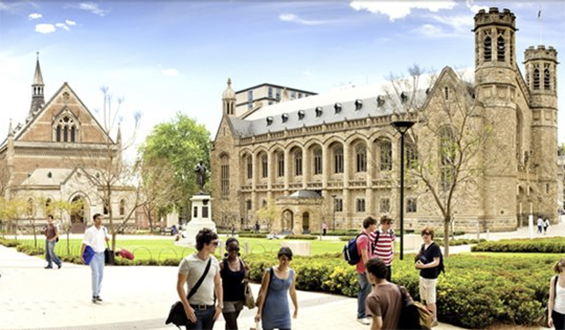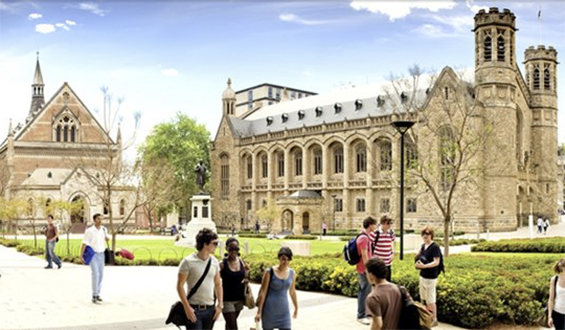
Adelaide University in Australia is phasing out traditional lectures in favor of online blended learning.
Even with the integration of technology that helps students and educators with scheduling, handing in assignments, studying and more, most college courses have remained dependent on a professor standing and delivering information using some sort of presentation device while students take notes. University of Adelaide’s Vice Chancellor Warren Bebbington said succinctly of lectures:
My view is they’re gone; they’re never coming back.
In 2014, his university began getting rid of traditional lectures and replacing them with online materials, especially video, and group work, to form a system the university calls “small-group discovery experience.” This allows students to do solitary learning on their own and use classroom time for problem-solving and activities that require interaction with other students or the professor. Video-based teaching allows students to skip over things they understand and repeat information that they didn’t catch on the first viewing.
The classes are also integrated with Harvard and MIT’s edX online coursework. It takes money to set up, but Bebbington feels it’s worth it. He’s confident about the role of blended learning on college campuses:
I think it is superior. In the old days of lectures you’re sitting in the lecture room and if you didn’t understand something it’s in one ear and then it’s gone. Now there’s capacity to replay things when the student sits at home, plus, of course, there’s capacity to go at your own speed.
So far, the University of Adelaide has integrated this approach into one grade level per year. By 2016, they plan to implement this system for undergraduates up to the junior level. Honors and graduate courses will be integrated in 2017.
Because of this approach, students have reported more engagement with classes. Bebbington said:
The retention rate went up and the overall satisfaction rate went up.
K-12 classrooms have also incorporated similar ideas, using a method known as flipped learning, writes D. Frank Smith of Ed Tech. With this system, students learn on their own with homework and teachers use class time to review and guide students through the concepts.
One of MIT’s senior academic officers, Eric Grimson, visited Adelaide to discuss implementing these ideas at his own university, writes Tim Dodd of AFR Weekend. At MIT, office hours have been abolished, and professors make themselves available instead at the student hub. Bebbington said:
You walk into their hub at MIT and all around the room you;ll see professors and lecturers doing things on computers, consulting, answering questions. They do this informal interaction in the student recreation area.
However, notes Philip Dawson of the Conversation, a problem can occur when students avoid doing the prerequisite work and show up to class unprepared. This can prevent the other students from learning efficiently and slow down the pace of the class as the teacher catches them up.




